Discover the untamed beauty of Ontario’s wilderness through its network of 340 pristine provincial parks, where ancient forests meet crystal-clear lakes and starlit skies await your next adventure. Following Leave No Trace principles, campers can immerse themselves in natural wonders from Algonquin’s iconic maple forests to Killarney’s white quartzite ridges. Whether you’re pitching a tent on Bon Echo’s waterfront sites, hiking Sleeping Giant’s boreal trails, or paddling through Quetico’s remote backcountry, Ontario Parks offers diverse camping experiences for every outdoor enthusiast. With reservations available up to five months in advance and options ranging from drive-up comfort camping to rugged backcountry exploration, your perfect wilderness escape awaits in Canada’s most populous province.
Planning Your Eco-Friendly Ontario Parks Adventure
Choosing the Right Campsite
Selecting the perfect campsite in Ontario Parks goes beyond just finding a flat spot for your tent. Look for established campsites that are already designated by the park – these areas are specifically chosen to minimize environmental impact while providing the best camping experience.
When choosing your site, opt for spots at least 30 meters away from water sources to protect shorelines and aquatic ecosystems. Hard, compacted surfaces are ideal for setting up camp as they’re more resistant to damage from foot traffic and tent stakes. Avoid areas with new plant growth or delicate vegetation.
Pro tip: In backcountry areas, seek out natural clearings rather than creating new ones. Many Ontario Parks have “thunderbox” toilets strategically placed – consider their location when selecting your site for convenience while maintaining appropriate distance.
During peak seasons, book your preferred campsite in advance through the Ontario Parks reservation system. Popular parks like Algonquin and Killarney can fill up months ahead, especially for prime waterfront spots. Consider less-traveled campgrounds for a more secluded experience and reduced environmental impact on heavily-used areas.
Remember to check your site’s specific rules and amenities – some offer electrical hookups and comfort stations, while others are deliberately more primitive to preserve the natural setting.
Sustainable Packing Tips
When packing for your Ontario Parks adventure, following eco-friendly camping practices starts with smart gear choices. Opt for reusable water bottles and food containers instead of disposable ones – they’re not only better for the environment but also more durable for outdoor use. Pack lightweight, multi-purpose items like bamboo utensils and cloth napkins to reduce waste.
Consider investing in solar-powered gear, such as lanterns and phone chargers, to minimize battery waste. When choosing camping equipment, look for products made from recycled materials or sustainable brands that emphasize environmental responsibility. A good quality tent and sleeping bag will last longer and prevent the need for frequent replacements.
For food storage, use beeswax wraps instead of plastic wrap, and bring mesh produce bags for organizing supplies. Pack biodegradable soap and natural insect repellent to avoid harmful chemicals entering the ecosystem. Don’t forget a dedicated trash bag for collecting recyclables and a separate one for compostable items.
Remember to bring a repair kit for your gear – fixing a small tear or loose stake is better than replacing entire items. By choosing durable, eco-conscious supplies, you’ll not only protect Ontario’s beautiful parks but also inspire fellow campers to do the same.
Minimal Impact Camping Techniques

Setting Up Camp Responsibly
When setting up your campsite in Ontario’s beautiful parks, it’s crucial to minimize environmental impact while creating a comfortable space for your outdoor adventure. Start by choosing established campsites whenever possible – these areas are specifically designed to handle camping activity and help protect surrounding vegetation.
Look for level ground that’s already bare of vegetation for your tent setup. If you need to clear small twigs or pine cones, set them aside rather than throwing them into the woods – they’re part of the natural ecosystem. Place your tent at least 15 meters away from water sources to protect shoreline vegetation and wildlife habitats.
When arranging your camp kitchen, use existing fire pits instead of creating new ones. Keep your cooking area compact and avoid expanding into untouched areas. A good tip is to lay down a tarp or groundsheet under your cooking space to catch food scraps and make cleanup easier.
For gear storage, use trees wisely – hang items using wide straps rather than rope, which can damage bark. Keep all food stored in sealed containers and locked in your vehicle or hung properly to avoid attracting wildlife.
Before leaving, take time to restore the site to its natural state. Remove all traces of your stay, fluff up any compressed grass, and ensure the area looks as untouched as possible for the next camper to enjoy.
Waste Management and Water Conservation
Keeping our parks pristine is a shared responsibility, and proper waste management is crucial for preserving Ontario’s natural beauty. Always follow the “Pack In, Pack Out” principle – everything you bring to your campsite should leave with you. Sort your waste into recyclables and garbage, using designated bins at your campground. Pro tip: bring reusable containers and bags to minimize packaging waste from the start.
Water conservation is equally important, even in a province blessed with abundant freshwater. When washing dishes, use biodegradable soap and collect greywater in a designated container – never dump it directly on the ground. Set up your washing station at least 30 meters from any water source to protect our lakes and streams.
For personal hygiene, take advantage of campground facilities when available. If you’re backcountry camping, use biodegradable products and follow proper protocols for waste disposal. A handy trick is to bring a collapsible water container – fill it during the day and use it sparingly for cooking and cleaning at your site.
Remember to check your campsite thoroughly before departing. Look for micro-trash like bottle caps or food wrappers that might have escaped notice. By practicing these simple habits, you’re helping maintain the pristine condition of Ontario’s parks for future generations of campers to enjoy.
Wildlife-Safe Food Storage
Proper food storage while camping isn’t just about keeping your snacks fresh – it’s essential for protecting local wildlife and maintaining a safe campsite. Ontario’s parks are home to various animals, including black bears, raccoons, and squirrels, who can be attracted by the smell of food.
Always store your food in airtight, animal-proof containers or your vehicle when not in use. If you’re backcountry camping, use a food barrel or hang your provisions at least 4 meters high and 2 meters away from the tree trunk. Pro tip: bring extra rope for hanging your food pack!
Keep your cooking area at least 50 meters away from your sleeping area, and never store food in your tent. After meals, wipe down all surfaces thoroughly and store your garbage in sealed containers. Even seemingly harmless items like toothpaste, soap, and scented lotions can attract wildlife, so store these with your food.
Clean up any spilled food immediately and dispose of grey water (dishwater) in designated areas only. A helpful trick I’ve learned is to pack strongly scented foods in double-sealed bags to minimize odors. Remember, feeding wildlife, whether intentional or not, can make them dependent on human food and lead to dangerous encounters. Let’s keep our furry neighbors wild and our camping experiences safe!

Ontario Parks’ Best Eco-Friendly Campsites
Backcountry Gems
For those seeking true wilderness solitude, Ontario Parks offers incredible backcountry camping experiences far from the crowds. Killarney Provincial Park’s hidden lakes and white quartzite ridges provide some of the most pristine backcountry sites in the province, accessible only by canoe or hiking trail. The crystal-clear waters of OSA Lake offer secluded camping spots where you might spot moose drinking at dawn.
Lake Superior Provincial Park’s Coastal Trail delivers rugged camping along the world’s largest freshwater lake, with sites tucked between ancient cliffs and peaceful coves. For experienced paddlers, Woodland Caribou Provincial Park in Northwestern Ontario offers ultimate remoteness – you might go days without seeing another soul while camping among boreal forests and pristine lakes.
Remember to practice low-impact camping in these sensitive areas. Pack out everything you bring in, use existing campsites rather than creating new ones, and keep your group size small. Consider using a camping hammock instead of a tent to minimize ground impact, and always store food properly to avoid wildlife encounters.
Pro tip: Book your backcountry permits well in advance, especially for popular parks like Killarney during peak season. The most remote sites often require careful planning and navigation skills, but reward you with unparalleled wilderness experiences and star-filled skies unmarred by light pollution.

Car Camping with a Conscience
Ontario Parks offers an incredible network of car camping sites that combine convenience with environmental consciousness. Many locations feature well-maintained comfort stations, spacious campsites, and innovative recycling programs that make it easy to minimize your footprint while enjoying the great outdoors.
At parks like Killbear and Algonquin, you’ll find excellent educational programs led by passionate naturalists who share insights about local ecosystems and wildlife. These programs are perfect for families looking to deepen their connection with nature while learning about conservation.
Most car camping sites come equipped with bear-proof food lockers and clearly marked waste separation stations. Pinery Provincial Park, for instance, has pioneered a remarkable composting program, while Bon Echo offers solar-powered facilities at select campsites.
Pro tip: Book sites away from main roads to maximize your nature experience while reducing noise pollution. Many parks now offer designated quiet zones perfect for wildlife watching and stargazing. Consider bringing a solar charger for your devices and eco-friendly camping gear to further reduce your impact.
Remember to pick up a park guide upon arrival – it contains valuable information about local species at risk and specific guidelines for protecting the park’s natural heritage. Many sites also offer special evening programs about reducing human-wildlife conflicts and preserving our natural spaces for future generations.
Seasonal Considerations for Sustainable Camping
Summer and Spring Protection
Spring and summer camping in Ontario Parks requires special attention to protect both the environment and your camping experience. When temperatures rise, practice the “leave no trace” principle by keeping your campsite clean and storing food properly to avoid attracting wildlife. Use designated fire pits and keep fires small to minimize impact, especially during dry conditions.
Choose eco-friendly sunscreen and insect repellents that won’t harm aquatic ecosystems when you swim. Speaking of swimming, stick to designated beach areas to protect sensitive shoreline vegetation. When hiking, stay on marked trails to prevent soil erosion and protect native plants – those wildflowers are beautiful exactly where they are!
Warm weather also means more wildlife activity. Keep your distance from animals and never feed them, as this can alter their natural behaviors. Store food in airtight containers or your vehicle, and always pack out what you pack in. Consider bringing reusable water bottles and containers instead of disposable ones.
Pro tip: Early morning and evening activities not only help you avoid the heat but also offer the best wildlife viewing opportunities while reducing your environmental impact during peak hours. Remember to respect quiet hours and your fellow campers who might be seeking that perfect peaceful wilderness experience.
Fall and Winter Low-Impact Techniques
As temperatures drop, camping requires extra attention to minimize our impact on Ontario’s delicate ecosystems. Layer your clothing instead of relying heavily on disposable hand warmers, and opt for reusable insulated bottles to keep drinks warm rather than single-use options. Choose campsites on durable surfaces, as frozen ground and dormant vegetation are particularly vulnerable to damage.
When gathering firewood, stick to fallen branches and avoid breaking limbs from living trees, which serve as vital winter shelter for wildlife. Keep fires modest – they actually heat more efficiently when contained, and you’ll use less wood. Remember to fully extinguish fires and pack out all ashes, as they can affect soil chemistry when left behind.
Winter camping often requires more gear, so plan carefully to avoid overpacking. Use multi-purpose items when possible, and always stick to established trails, even when snow-covered, to protect dormant plants beneath. Consider using a sled to transport gear rather than carrying multiple bags, which can help prevent soil compaction on frozen ground.
For washup, use biodegradable soap sparingly and dispose of grey water at least 200 feet from water sources, as winter’s frozen ground doesn’t filter water as effectively as unfrozen soil.
As we wrap up our journey through Ontario Parks’ camping experiences, let’s remember that these natural treasures belong not just to us, but to future generations. Every time we venture into these spectacular wilderness areas, we become stewards of the land, responsible for preserving its beauty and integrity.
By following the Leave No Trace principles, properly disposing of waste, respecting wildlife, and staying on marked trails, we ensure that others can enjoy the same pristine experiences we’ve had. Consider going the extra mile by participating in park cleanup events or joining local conservation groups that support Ontario Parks.
Remember, sustainable camping isn’t just about following rules—it’s about fostering a deeper connection with nature and understanding our role in protecting it. Whether you’re watching a sunset at Killarney, hiking through Algonquin’s autumn colors, or teaching your children how to set up their first tent, you’re creating memories while helping preserve these spaces for tomorrow’s adventurers.
Let’s make a commitment to be mindful visitors and passionate protectors of Ontario’s natural heritage. After all, the best camping stories are those that can be retold for generations to come.



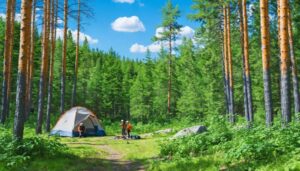





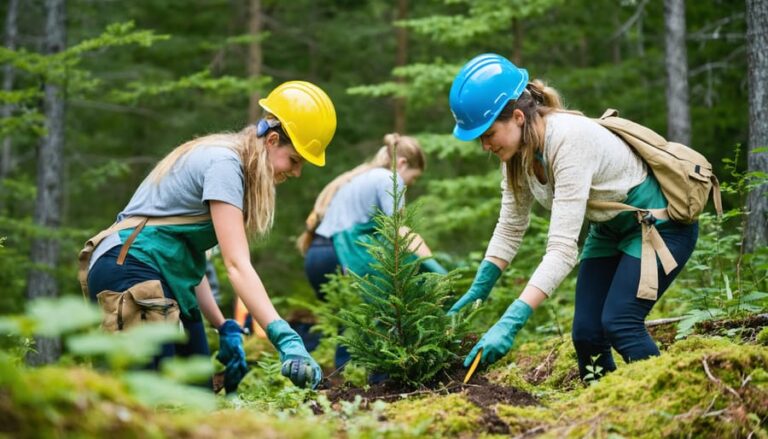
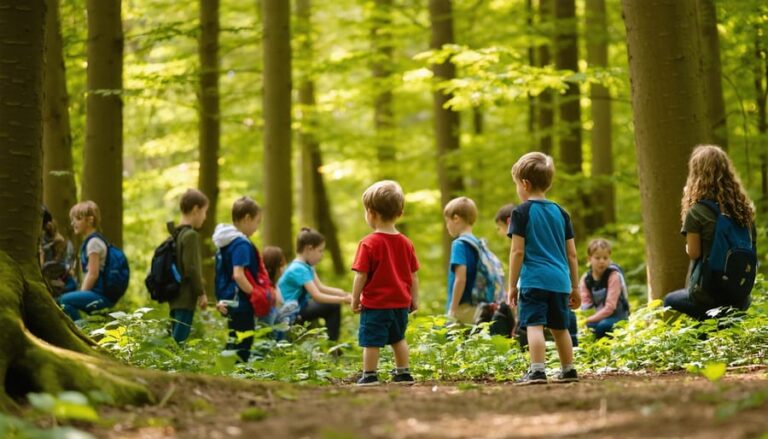
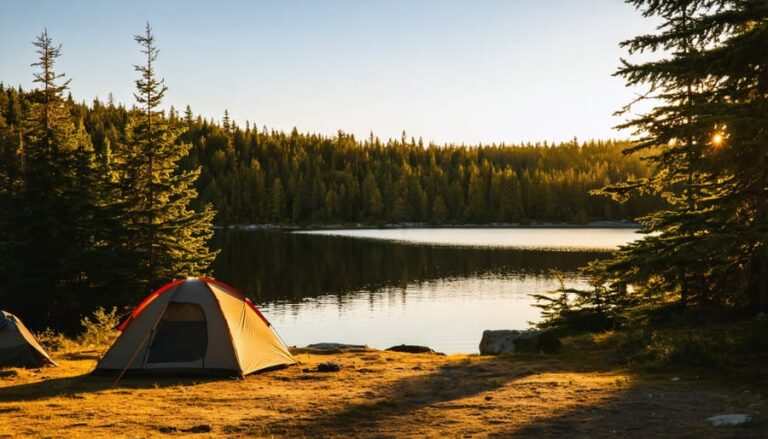
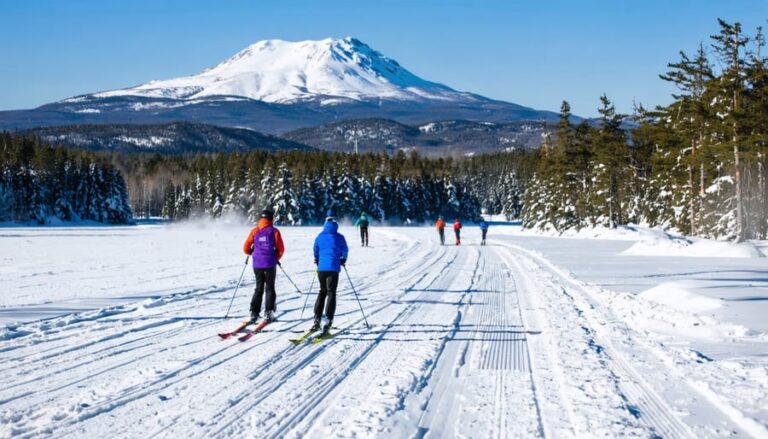

+ There are no comments
Add yours